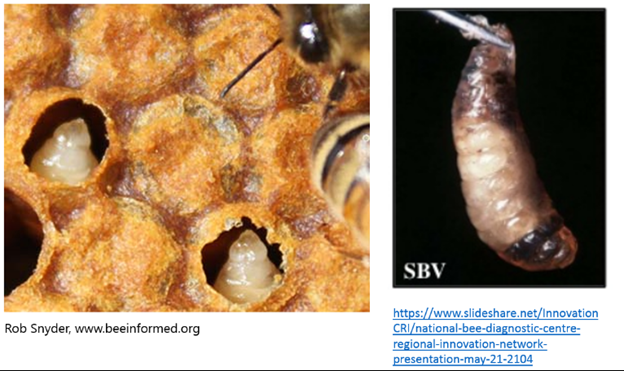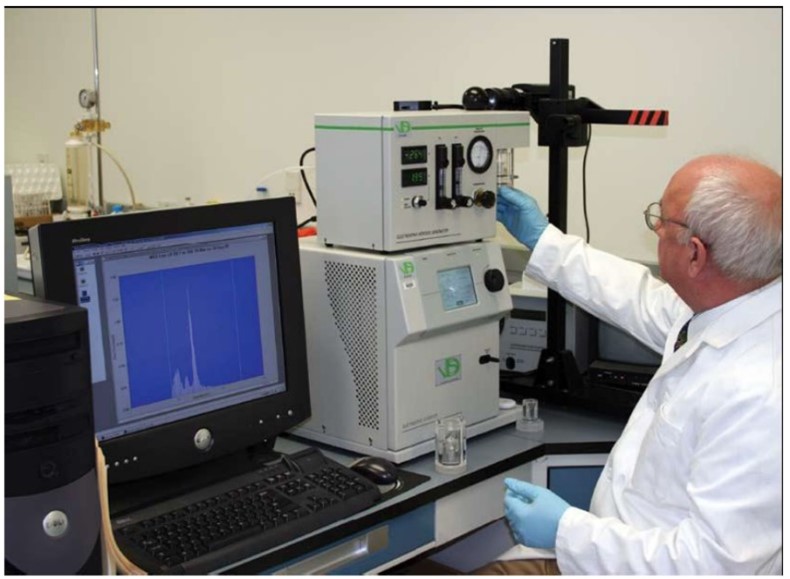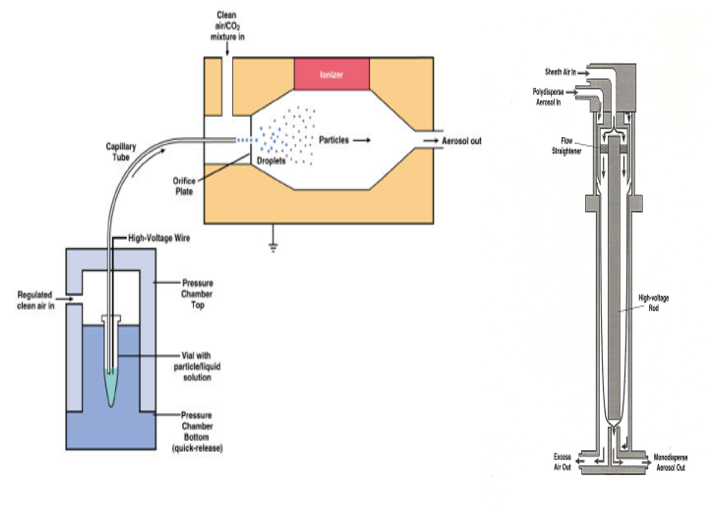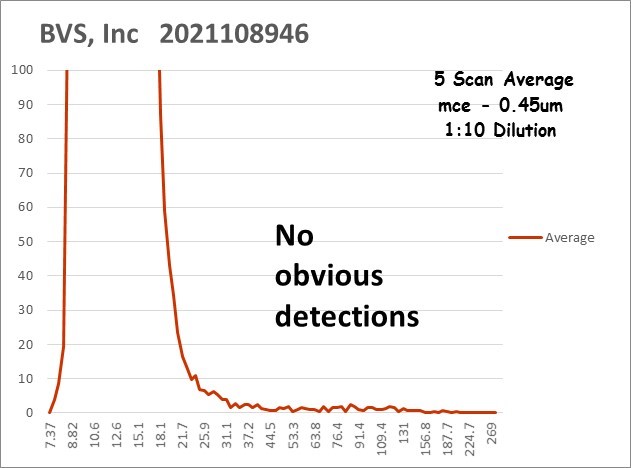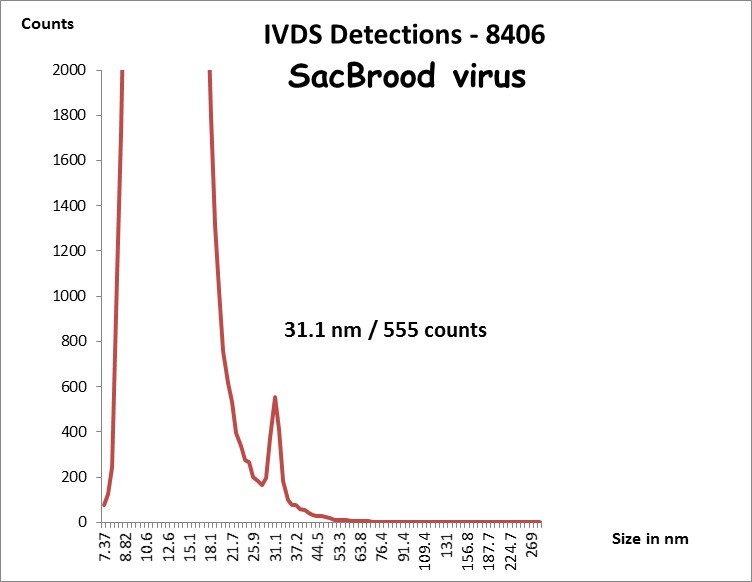Roger A. Moore, Ph.D. & Dave Wick, CEO BVS, Inc.
Accurate and cost-effective rapid detection of viruses, including variant or engineered strains, requires novel approaches. It is essential that beekeepers have access to technology for monitoring colony health, giving them an early warning of emerging outbreaks. BVS, Inc. has made these capabilities available to beekeepers nationwide thanks to direct funding from the beekeepers themselves. Honey bees are essential to securing the global food supply due to their role as pollinators of critical agricultural products1. According to the EPA, pollination is a critical part of more than half of the 29 billion dollar per year U.S. agriculture industry2. Pollinators today are under an unprecedented amount of stress, ranging from pesticides and loss of habitat to changing environments. Additionally, honey bees are plagued by a multitude of pathogens, including bacteria, fungi, protozoa, mites, small hive beetles and viruses3. Disease prevention and control plays a huge role in the success of our agricultural industry and most of that burden is shouldered by the beekeepers.
Single-stranded RNA viruses are the largest class of honey bee infecting pathogens4. For example, the Sacbrood virus infection shown in Figure 1 is a common problem among North American hives, with multiple repercussions. Viral infections are notoriously associated with devastating colony losses that threaten the quality of agricultural crops. Most of these viruses are either exchanged between bees or transmitted from pests like the infamous Varroa destructor mite. Early identification of any virus present in a colony can be a critical aspect of the beekeeper strategy to avoid more serious problems down the road. In this article, we discuss the available methods for virus detection and identification.
There are a limited number of methods for identifying specific viruses in honey bees. Polymerase chain reaction (PCR), which is a highly sensitive method for detecting a very specific viral sequence5, is currently the most widely used technique. PCR was used extensively in the Covid-19 pandemic. If a virus is present, then their DNA or RNA has to be there as well. The PCR method requires certain enzymes, chemical reagents, and an instrument called a thermal cycler. Researchers are limited using PCR methods who must know the identity of a virus in order to find that specific virus. If specific genetic sequence is unknown, this makes identification of an unknown virus difficult with the PCR method. Viral identification is typically completed by isolating genetic material from a sample and then sequencing the sample. Viruses can be difficult to isolate, discovery of new viruses is a complicated research project that requires funding, laboratories, genetic sequencing and experts with sophisticated software. Some honey bee viruses have never been discovered and remain undetectable by current PCR methods.
The Integrated Virus Detection System (IVDS) offers an alternative approach to the detection of honey bee viruses. It was originally developed and patented by the United States Army in order to rapidly detect and quantify all types of viruses and virus-like particles6. The goal was to create a robust, straightforward approach to virus detection that was not dependent on chemical reactions and could operate as a mobile unit. This goal has been accomplished and demonstrated ever since it was first commercialized by BVS, Inc in 2007 specifically for honey bees. The IVDS system, as shown in Figure 3, has a number of advantages that other methods lack. Identifying particles with IVDS is done based on physical methods without the need for any chemicals or biological reagents. Virions are first physically separated based upon the well-established techniques of filtration, ultrafiltration and centrifugation. Once isolated, particles are counted based upon their individual densities, movement through an air flow, and their unique sizes. The lack of dependence upon expensive biochemical reagents enables a lower cost structure and higher resilience in this new era of supply chain disruption. For this reason, the IVDS system provides a reliable and accurate method that can be independently utilized or combined with other available techniques. In the event that a honey bee colony is infected with an unknown virus, the IVDS instrumentation can nonetheless make a detection, even in cases where PCR is blind due to the lack of a known genetic sequence. This ability to detect unknown or mutated viruses is a significant step forward in bee health.
The IVDS system is based upon proven technology. Charged particles from the sample preparation are formed using electrospray ionization, a technique that received the Nobel Prize in chemistry7. As shown in Figure 3, particles travel through an electrically charged tube that measures the relative mobilities of those particles, which are then correlated to a specific size. Quantification of sized particles is simply achieved using a particle counter. This technology has other applications as well. For example, it is widely used to monitor particulates in smokestacks and automobile exhaust8. Dr. Charles Wick invented and patented this technique for detecting and quantifying virions9. BVS, Inc. has since licensed this invention from the United States Army and utilizes the technology towards identifying honey bee viruses, including Acute Bee Paralysis Virus (ABPV), Chronic Bee Paralysis Virus (CBPV), Israeli Acute Paralysis Virus (IAPV), Sacbrood virus (SBV), Kashmir Bee Virus (KBV), Lake Sinai Virus-2 (LSV), Deformed Wing Virus (DWV), and Varroa Destructor Virus-1 (VDV), among others. We are here to help you keep your bees strong and improve your bottom line, it is up to you to test your bees to keep them healthy! www.bvs-inc.us
References
- Michener C.D. The Bees of the World. 2nd ed. The Johns Hopkins University Press; Baltimore, MD, USA: 2007
- https://www.epa.gov/sciencematters/understanding-how-pesticide-exposure-affects-honey-bee-colonies
- https://www.mdpi.com/journal/pathogens/special_issues/Infection_Honey_Bees#
- Tantillo G. et. al. Virus Infections of Honeybees Apis Mellifera. Ital J Food Saf, 4(3): 5364, 2015
- https://www.ncbi.nlm.nih.gov/probe/docs/techpcr/
- Wick, C.H. 2015. Integrated Virus Detection, Boca Raton, Fl. CRC Press
- https://en.wikipedia.org/wiki/John_B._Fenn
- https://tsi.com/products/particle-counters-and-detectors/engine-exhaust-particle-counters/
- U.S. Patent 8309029B1S8309029B1







